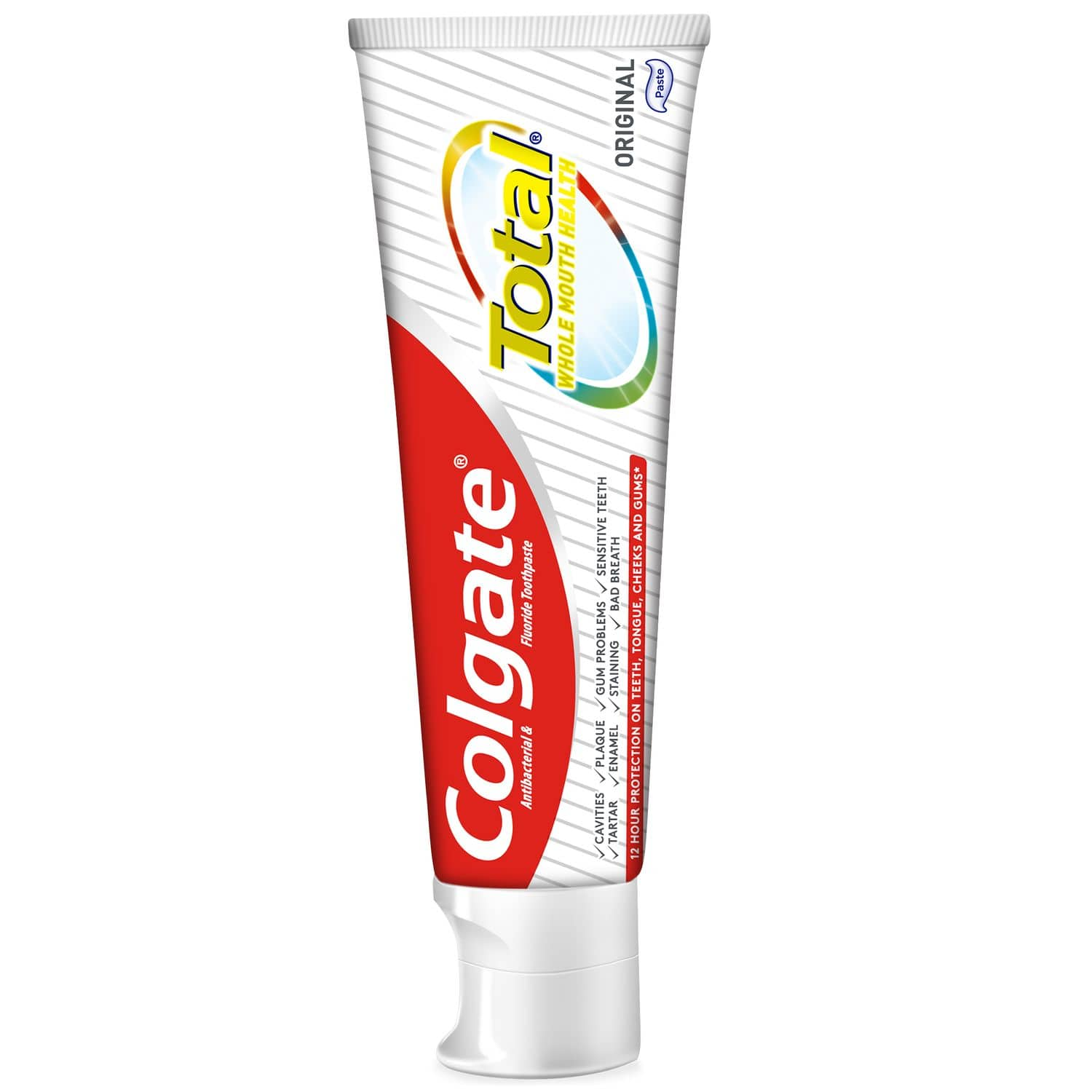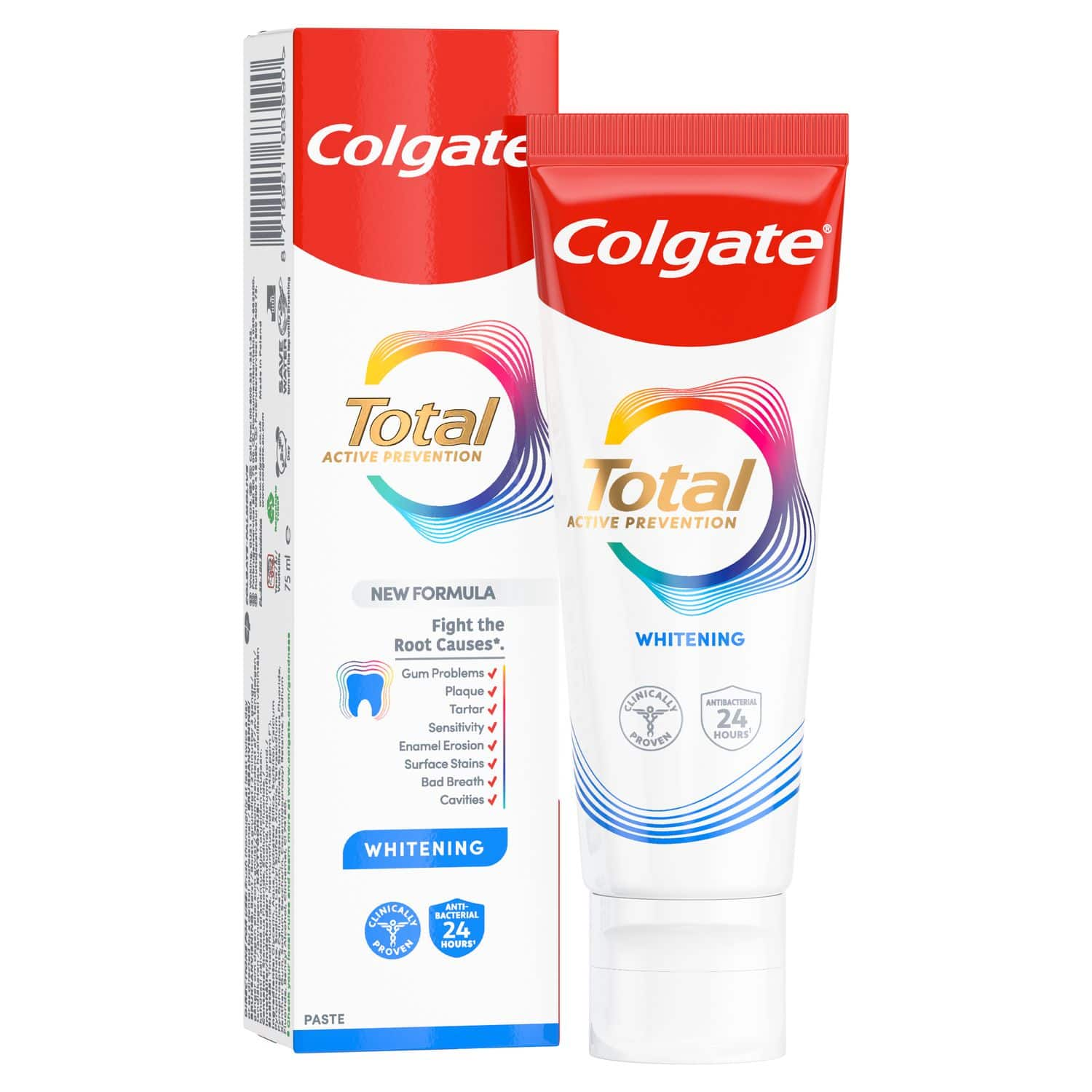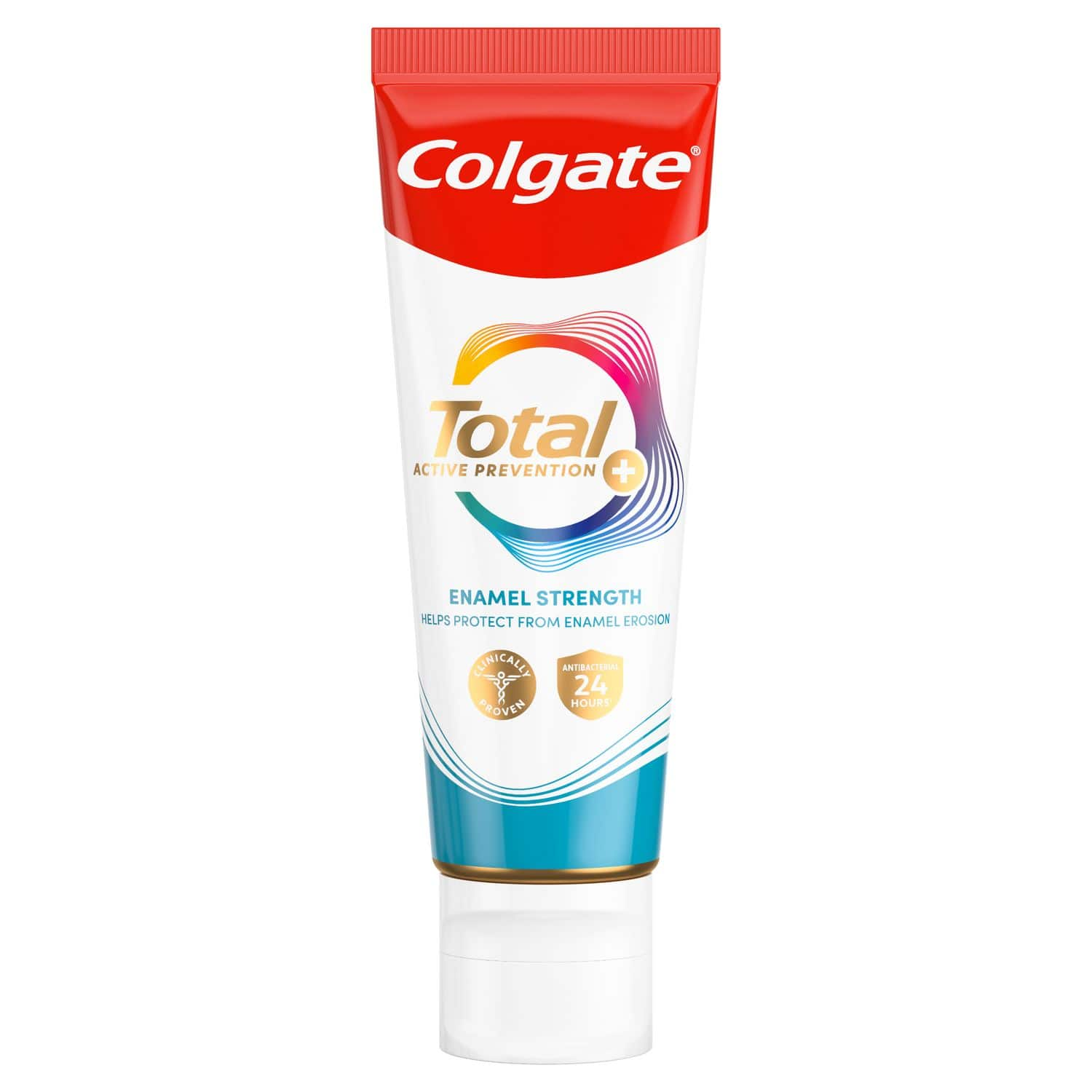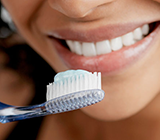Treatment of Bad Breath
It is important to carry out effective oral hygiene at home twice daily, by tooth brushing with a antibacterial toothpaste and flossing to remove food debris and dental plaque on and between teeth. This should include all restorations, attention should be paid to the gum line, and the tongue surface should be brushed to remove odour-causing bacteria. A published study reported that tongue and tooth brushing in combination with dental flossing significantly decreased bleeding of gums as well as reduced bad breath1 over a two week period of time. Another clinical study confirmed that brushing twice a day with an antibacterial toothpaste and using a toothbrush with a tongue cleaner can eliminate bad breath 2.
Tongue Cleaning helps towards Fresher, Cleaner Breath
You can use a toothbrush such as a Colgate 360° toothbrush with the tongue cleaner on the back of the toothbrush head for cleaning both your teeth and tongue. After brushing your upper and lower teeth with an antibacterial toothpaste, flip the toothbrush over to the tongue cleaner and place the tongue cleaner on the surface of the tongue and move it forward towards the tip. After you have scraped that portion of the tongue, rinse the tongue brush off with warm water to remove any odour causing bacteria. Then place the tongue brush in the next section of the tongue surface and repeat as described above again.
Consult your dentist or dental hygienist when choosing oral hygiene products to help you eliminate plaque and odour causing bacteria and review your routine at home to help eliminate bad breath
The key to a clean, fresh mouth is an optimal daily oral hygiene routine at home along with professional advice and recommendations discussed with you by your dental professional.
© Copyright 2009 Colgate-Palmolive Company
References:
1. Biesbrock, A, et al. Assessment of Treatment Responses to Dental Flossing in Twins., J Perio 77(8):1386-1391, 2006.
2. University of Buffalo (Peter Moses, Betsey Clark, Violet Maraszthy, Joseph Zambon, (University of Buffalo), P.K. Sreenivasan (Colgate), Abstract presented at 2008 AADR Meeting.
This article is intended to promote understanding of and knowledge about general oral health topics. It is not intended to be a substitute for professional advice, diagnosis or treatment. Always seek the advice of your dentist or other qualified healthcare provider with any questions you may have regarding a medical condition or treatment.
ORAL HEALTH QUIZ
What's behind your smile?
Take our Oral Health assessment to get the most from your oral care routine
ORAL HEALTH QUIZ
What's behind your smile?
Take our Oral Health assessment to get the most from your oral care routine











